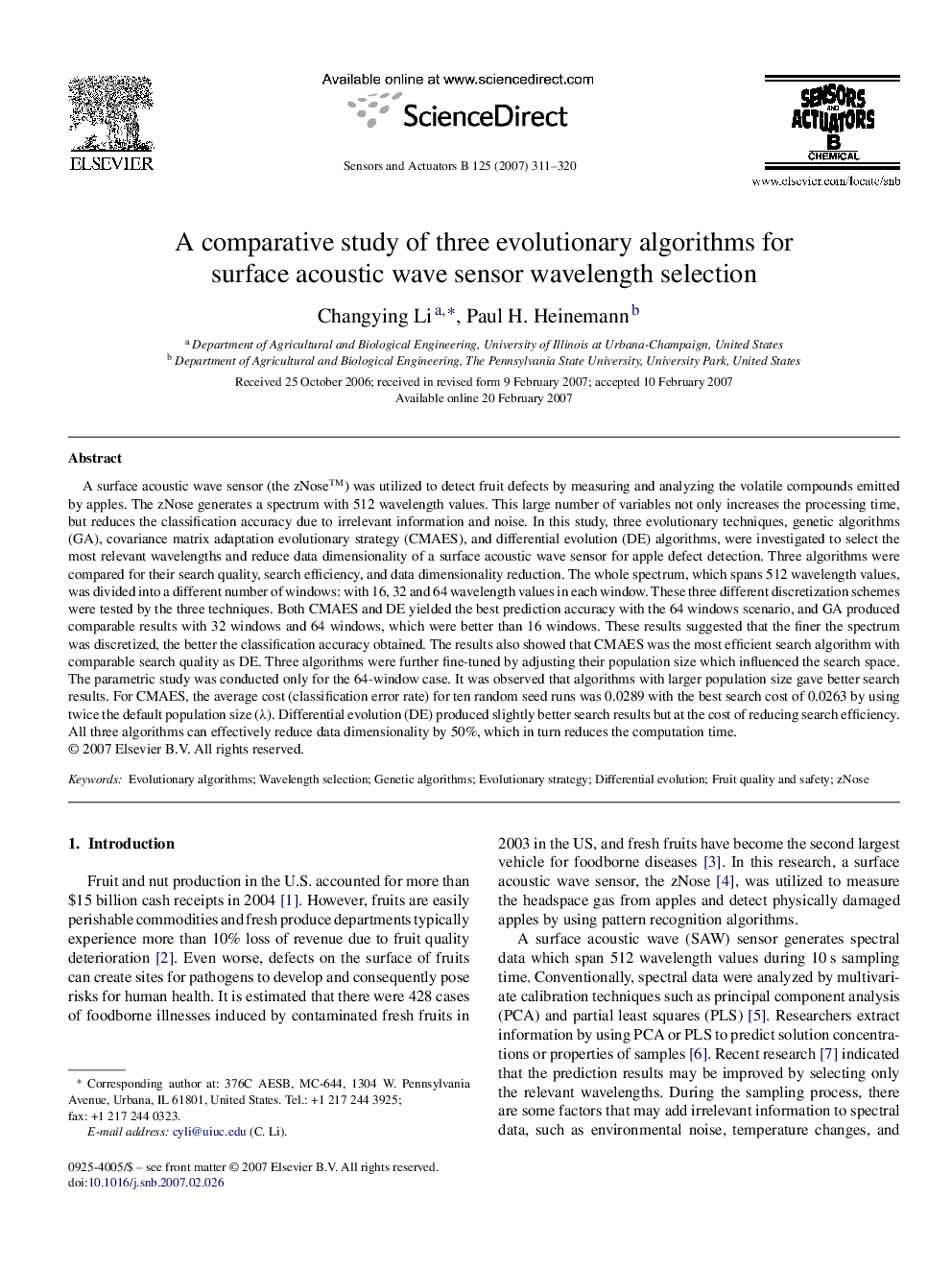| کد مقاله | کد نشریه | سال انتشار | مقاله انگلیسی | نسخه تمام متن |
|---|---|---|---|---|
| 751688 | 895251 | 2007 | 10 صفحه PDF | دانلود رایگان |

A surface acoustic wave sensor (the zNose™) was utilized to detect fruit defects by measuring and analyzing the volatile compounds emitted by apples. The zNose generates a spectrum with 512 wavelength values. This large number of variables not only increases the processing time, but reduces the classification accuracy due to irrelevant information and noise. In this study, three evolutionary techniques, genetic algorithms (GA), covariance matrix adaptation evolutionary strategy (CMAES), and differential evolution (DE) algorithms, were investigated to select the most relevant wavelengths and reduce data dimensionality of a surface acoustic wave sensor for apple defect detection. Three algorithms were compared for their search quality, search efficiency, and data dimensionality reduction. The whole spectrum, which spans 512 wavelength values, was divided into a different number of windows: with 16, 32 and 64 wavelength values in each window. These three different discretization schemes were tested by the three techniques. Both CMAES and DE yielded the best prediction accuracy with the 64 windows scenario, and GA produced comparable results with 32 windows and 64 windows, which were better than 16 windows. These results suggested that the finer the spectrum was discretized, the better the classification accuracy obtained. The results also showed that CMAES was the most efficient search algorithm with comparable search quality as DE. Three algorithms were further fine-tuned by adjusting their population size which influenced the search space. The parametric study was conducted only for the 64-window case. It was observed that algorithms with larger population size gave better search results. For CMAES, the average cost (classification error rate) for ten random seed runs was 0.0289 with the best search cost of 0.0263 by using twice the default population size (λ). Differential evolution (DE) produced slightly better search results but at the cost of reducing search efficiency. All three algorithms can effectively reduce data dimensionality by 50%, which in turn reduces the computation time.
Journal: Sensors and Actuators B: Chemical - Volume 125, Issue 1, 16 July 2007, Pages 311–320